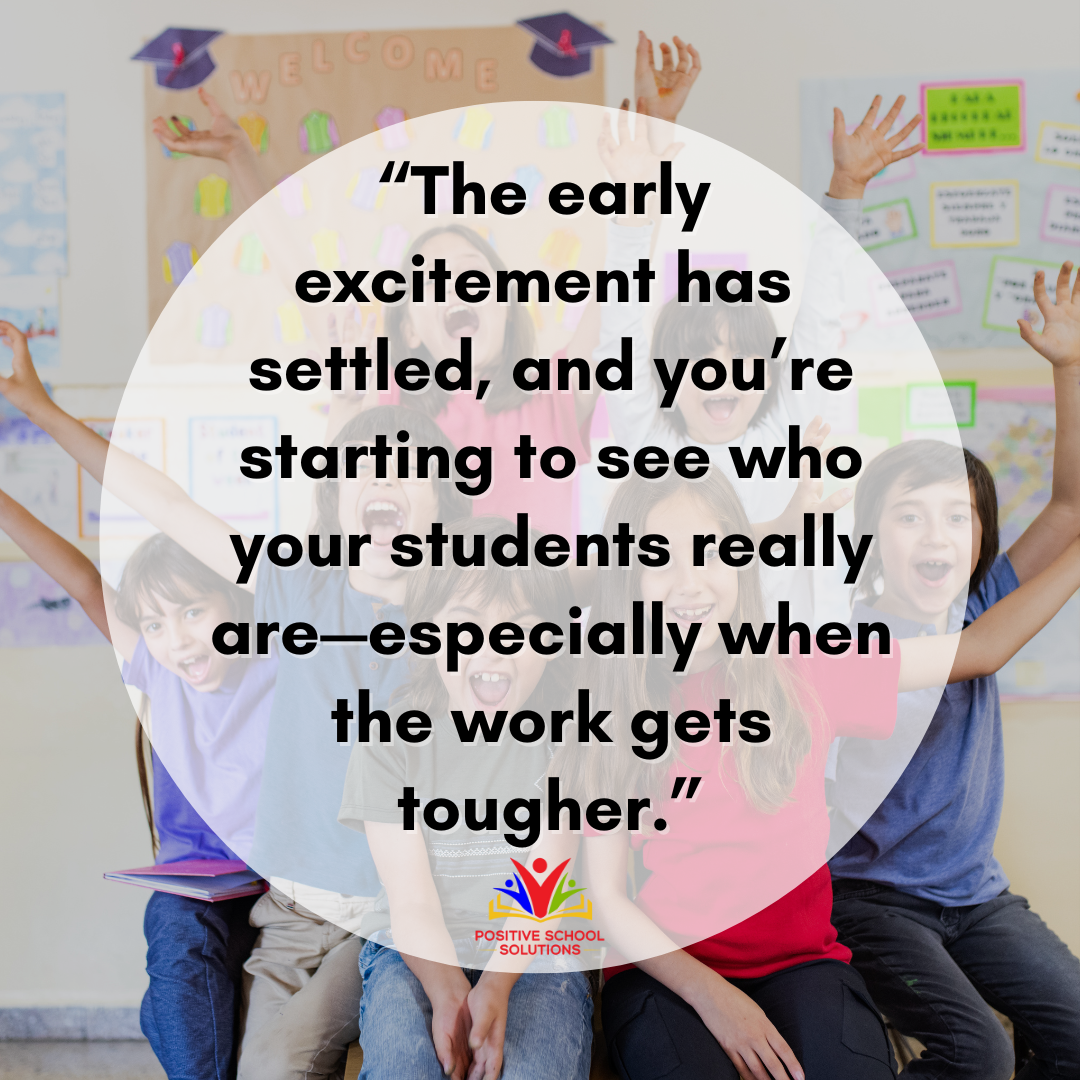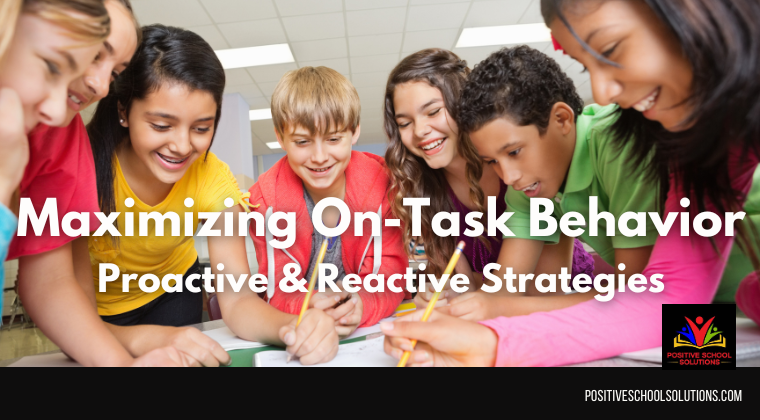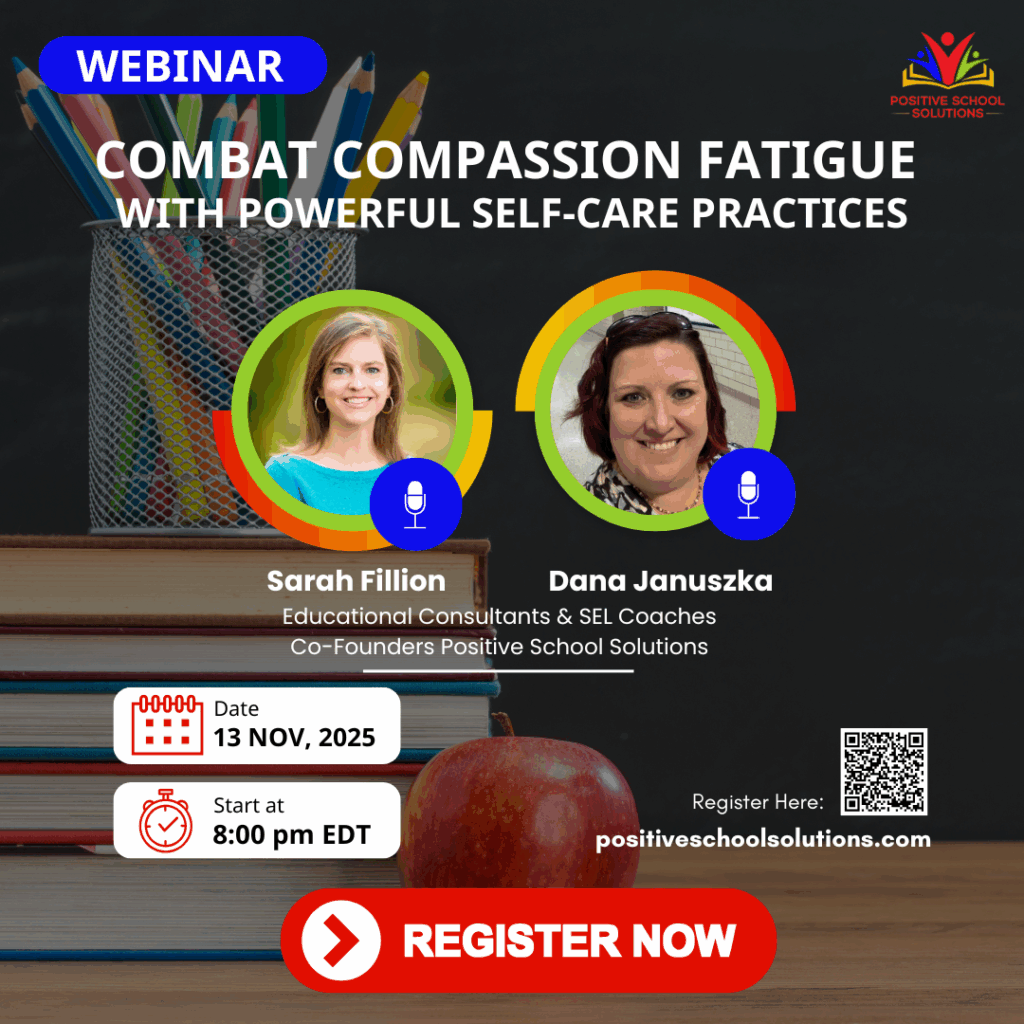
We’re a few weeks into the school year now, and for many of us, that means the honeymoon phase is over. The early excitement has settled, and you’re starting to see who your students really are—especially when the work gets tougher. Some kids will lean into the challenge, showing perseverance and grit. But for others, the moment the content becomes difficult, they start to shut down, act out, or distract themselves and others. This is where the real work begins, and all those relationships you’ve been building are about to pay off!
Proactive Strategies to Set Students Up for Success
Before we even get to the moments of frustration, it’s crucial to set students up for success. The more prepared they are, the fewer bumps we’ll encounter along the way. Here are a few strategies that can make a big difference:
-
- Create the Conditions for Students to Thrive: No student wants to feel embarrassed or judged for not knowing the answer. By creating an environment where it’s safe to ask questions and take risks, you’ll help them feel more comfortable engaging with difficult tasks. They need to know it’s okay to be wrong sometimes, as long as they’re trying.
- Create the Conditions for Students to Thrive: No student wants to feel embarrassed or judged for not knowing the answer. By creating an environment where it’s safe to ask questions and take risks, you’ll help them feel more comfortable engaging with difficult tasks. They need to know it’s okay to be wrong sometimes, as long as they’re trying.
-
- Model the Tough Stuff: We all learn better by seeing examples, right? The same goes for your students. If you model how to tackle the tricky parts of a lesson, they’ll have a clearer idea of what’s expected and how to approach it themselves. Watching you struggle a little or break something down step by step can make it less intimidating for them.
- Model the Tough Stuff: We all learn better by seeing examples, right? The same goes for your students. If you model how to tackle the tricky parts of a lesson, they’ll have a clearer idea of what’s expected and how to approach it themselves. Watching you struggle a little or break something down step by step can make it less intimidating for them.
-
- SPEAK Success Into Existence: How we talk to our students can shape how they see themselves. When we offer praise for their effort, highlight the progress they’ve made, and remind them that challenges are part of learning, they begin to believe they can handle the tough stuff. Sometimes, all a student needs to hear is, “You’re on the right track,” or “Keep pushing, you’ve got this!”
Reactive Strategies for Maintaining a Peaceful Learning Environment
Of course, even with the best intentions, there will still be moments when students hit a wall. The important thing is how we respond when they do. If we let one student’s frustration or silliness derail the whole class, everyone loses. Here’s how to keep the room on track:
-
- Provide Space to Reset: Sometimes, stepping away for a minute is all it takes. When a student gets overwhelmed, offer them a moment to breathe, regroup, and re-enter the task with a clearer head. It’s a small move that can prevent bigger disruptions down the line.
- Provide Space to Reset: Sometimes, stepping away for a minute is all it takes. When a student gets overwhelmed, offer them a moment to breathe, regroup, and re-enter the task with a clearer head. It’s a small move that can prevent bigger disruptions down the line.
-
- Stop Silliness Before It Spreads: You know that moment when one student starts acting up, and suddenly the whole room is teetering on the edge of chaos? It’s tempting to ignore it, hoping it’ll pass—but addressing it calmly and early can prevent a chain reaction. Gently redirecting that energy back to the task at hand keeps things running smoothly.
- Stop Silliness Before It Spreads: You know that moment when one student starts acting up, and suddenly the whole room is teetering on the edge of chaos? It’s tempting to ignore it, hoping it’ll pass—but addressing it calmly and early can prevent a chain reaction. Gently redirecting that energy back to the task at hand keeps things running smoothly.
-
- Refer Back to the Rules: Remember those expectations you set at the beginning of the year? Now’s the time to remind your students of them. A quick, calm reference to the rules—without making it a big deal—helps students remember the boundaries that have been in place all along. It’s not about punishment; it’s about a gentle reminder of the structure they can count on.
Relationships: The Key to Everything
At the heart of all these strategies is the foundation you’ve already laid: your relationships with students. It’s those relationships that will allow you to help them work through frustrations, build perseverance, and discover the learning strategies that work best for them.
Much like a honeymoon in a marriage, those first few weeks of the school year are just the beginning. The excitement sets the stage, but the real depth comes later. As the school year continues, the bonds you’ve built with your students will help you navigate the tougher moments and keep things running smoothly. The relationships, routines, and structures you’ve put in place are what will sustain your classroom as you grow together throughout the year.
Want to Dive Deeper into Strategies for Keeping Students On-Task?
If you’re looking for more ways to keep your students focused and engaged, check out our course, Maximizing On-Task Behaviors. You’ll get practical techniques for balancing proactive strategies with effective interventions, designed to create a productive and supportive learning environment.
Course Highlights:
-
- Boost On-Task Behavior: Learn a range of techniques to keep students engaged and focused throughout the lesson.
- Boost On-Task Behavior: Learn a range of techniques to keep students engaged and focused throughout the lesson.
-
- Avoid Common Pitfalls: Discover how to communicate boundaries more effectively to improve classroom management.
- Avoid Common Pitfalls: Discover how to communicate boundaries more effectively to improve classroom management.
-
- Master Strategies to Prevent and Resolve Off-Task Behavior: Evaluate both proactive and reactive approaches to effectively handle common off-task behaviors.
By using these strategies, you’ll create a learning environment where your students can thrive, both academically and emotionally.
Written by Sarah Fillion 2024



